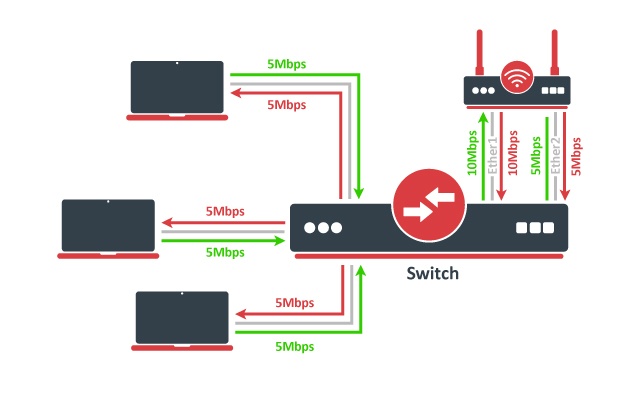Table of Contents
Summary
...
Bonding is a technology that allows aggregation of multiple ethernet-like interfaces into a single virtual link, thus getting higher data rates and providing failover.
...
| Info |
|---|
CRS3xx, CRS5xx series switches, and CCR2116, CCR2216 routers and 88E6393X, 88E6191X, 88E6190 switch chips support bridge hardware offloading with bonding interfaces. Only |
...
The mode is basically the same as balance-tlb but as balance-tlb but incoming IPv4 traffic is also balanced. The receive load balancing is achieved by ARP negotiation. The bonding driver intercepts locally generated ARP messages on their way out and overwrites the source hardware address with the unique address of one of the slaves in the bond such that different peers use different hardware addresses. Only MII link monitoring is supported (ARP link monitoring is ignored when configured), the additional downside downside of this mode is that it requires device driver capability to change MAC address. The mode is not compatible with local-proxy-arp setting.
The image above illustrates how balance-alb mode works. Compared to balance-tlb mode, traffic from clients can also use the secondary link to communicate with the router.
...
